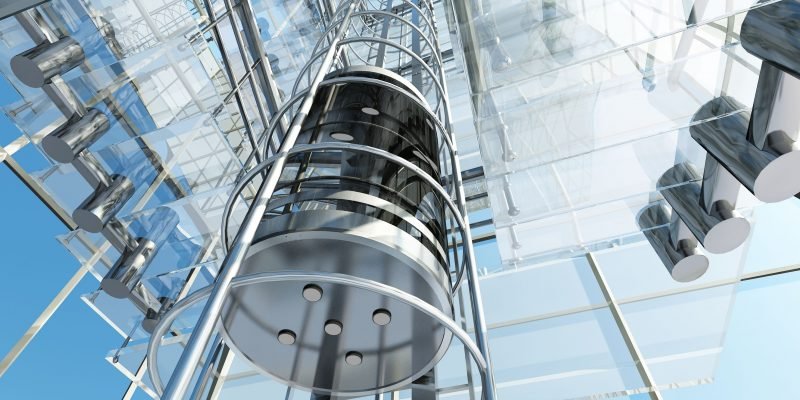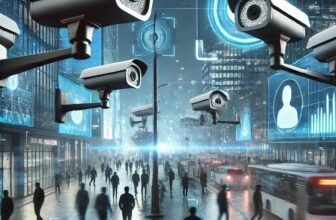
Smart Elevators: How AI Is Reducing Wait Times in High-Rise Buildings
As cities continue to expand vertically, high-rise buildings are becoming the norm rather than the exception. These towering structures accommodate thousands of people daily, creating a significant demand for efficient transportation within the buildings. One of the most pressing concerns for residents, workers, and visitors is the amount of time spent waiting for elevators. Long wait times can lead to frustration, decreased productivity, and inefficiencies in building operations.
Enter smart elevators powered by artificial intelligence (AI). These advanced systems are revolutionizing vertical transportation by optimizing performance, reducing wait times, and improving the overall user experience. AI-driven elevator systems leverage machine learning, predictive analytics, and real-time data to enhance efficiency and redefine the way people move in high-rise buildings. This article delves into the impact of AI on smart elevators, exploring how these innovations are transforming modern architecture and urban life.
The Challenges of Traditional Elevator Systems
Conventional elevator systems operate on relatively simple algorithms. When a user presses a button to go up or down, the system assigns an elevator based on availability and proximity. However, as the number of floors and passengers increases, these systems struggle to maintain efficiency. The primary challenges of traditional elevators include:
- Long Wait Times – As more people request elevators, wait times increase, especially during peak hours such as morning rushes and lunch breaks.
- Inefficient Routing – Traditional systems often send multiple elevators to the same floor or fail to distribute the workload evenly.
- Energy Consumption – Frequent starts and stops, as well as inefficient elevator allocation, lead to increased energy use.
- Lack of Predictive Capabilities – Traditional elevators operate reactively, responding only to real-time button presses without analyzing historical data to anticipate demand.
How AI Is Transforming Elevator Efficiency
AI-driven smart elevators use sophisticated algorithms and advanced technologies to address these challenges. By integrating machine learning, Internet of Things (IoT) sensors, and real-time analytics, AI enhances elevator performance in the following ways:
1. Predictive Analytics for Demand Forecasting
AI-powered elevators collect data on usage patterns, peak hours, and individual preferences over time. Using this information, the system can predict when and where demand will be highest. This predictive capability allows elevators to pre-position themselves in strategic locations, reducing wait times during busy periods.
2. Destination Control Systems (DCS)
Traditional elevator systems require users to press a button indicating their desired direction. AI-driven Destination Control Systems (DCS) take this a step further by allowing passengers to input their destination floors before entering the elevator. The system then groups passengers traveling to similar floors into the same elevator, reducing unnecessary stops and optimizing the journey.
For example, instead of five people pressing the “up” button and then selecting floors 5, 8, 12, 15, and 18 separately, the system would assign them an elevator that minimizes the number of stops, significantly improving efficiency.
3. Real-Time Traffic Optimization
AI-based systems continuously analyze real-time data on passenger demand, elevator occupancy, and traffic flow within the building. If a particular elevator is overloaded or experiencing delays, the system reroutes other elevators to balance the workload.
4. Adaptive Learning and Continuous Improvement
Machine learning enables smart elevators to adapt and refine their algorithms based on historical usage patterns. Over time, they learn which floors experience the highest traffic at different times of the day, adjusting their operations accordingly to reduce congestion and enhance efficiency.
5. IoT and Smart Building Integration
AI-powered elevators seamlessly integrate with other smart building systems, such as HVAC, security, and lighting. For example, if a building’s security system detects an influx of employees arriving at a particular entrance, the elevator system can proactively dispatch units to accommodate the increased demand.
6. Energy Efficiency and Sustainability
By optimizing elevator movement, reducing unnecessary stops, and anticipating demand, AI-driven elevators significantly reduce energy consumption. Additionally, regenerative braking technology captures energy during descents, converting it into electricity that can be reused within the building.
Real-World Applications and Case Studies
Several leading companies are pioneering AI-driven elevator technology, demonstrating its real-world benefits.
1. KONE’s AI-Powered Elevators
KONE, a global leader in elevator manufacturing, has developed AI-driven solutions that use predictive analytics to improve performance. Their 24/7 Connected Services utilize IoT sensors and cloud computing to monitor elevator health, predict maintenance needs, and enhance efficiency.
2. Otis Elevator’s AI-Based CompassPlus System
Otis Elevator Company introduced CompassPlus, an AI-powered DCS that reduces travel time by up to 50%. By grouping passengers efficiently and analyzing traffic patterns, the system minimizes congestion and enhances user experience.
3. Mitsubishi Electric’s AI Integration in High-Rises
Mitsubishi Electric has implemented AI-driven solutions in skyscrapers, such as the Shanghai Tower. Their AI-based algorithm analyzes building traffic in real time, ensuring that elevators are optimally deployed to meet demand.
The Future of AI-Powered Elevators
The future of smart elevators is promising, with several innovations on the horizon:
1. AI-Powered Voice and Gesture Control
Future elevators may eliminate the need for physical buttons altogether, incorporating AI-driven voice and gesture recognition. Passengers will simply speak their destination or use hand movements to select floors, reducing contact points and enhancing accessibility.
2. Integration with Autonomous Mobility
Smart elevators could be integrated with autonomous transportation solutions, such as self-driving vehicles. For instance, upon arrival at a smart building, a person’s autonomous car could communicate with the elevator system, ensuring that an elevator is waiting upon their entrance.
3. Augmented Reality (AR) for Maintenance
AI-powered AR tools will assist technicians in maintaining and repairing elevators more efficiently. By overlaying real-time diagnostics and repair instructions, AR can reduce downtime and improve service reliability.
4. Hyper-Personalized Elevator Experiences
Future AI-driven elevators may offer personalized experiences, adjusting lighting, music, and temperature based on an individual’s preferences. This level of customization could further enhance user satisfaction in high-end commercial and residential buildings.
AI-powered smart elevators are transforming the way people navigate high-rise buildings. By utilizing predictive analytics, real-time optimization, and machine learning, these systems significantly reduce wait times, enhance efficiency, and improve sustainability. As AI technology continues to evolve, the potential for even greater advancements in elevator systems remains vast.
With the integration of IoT, automation, and smart building technologies, AI-driven elevators are setting a new standard for urban mobility. As cities continue to grow, the implementation of intelligent elevator systems will play a crucial role in shaping the future of high-rise living and working environments. image/maxxess-systems.com





